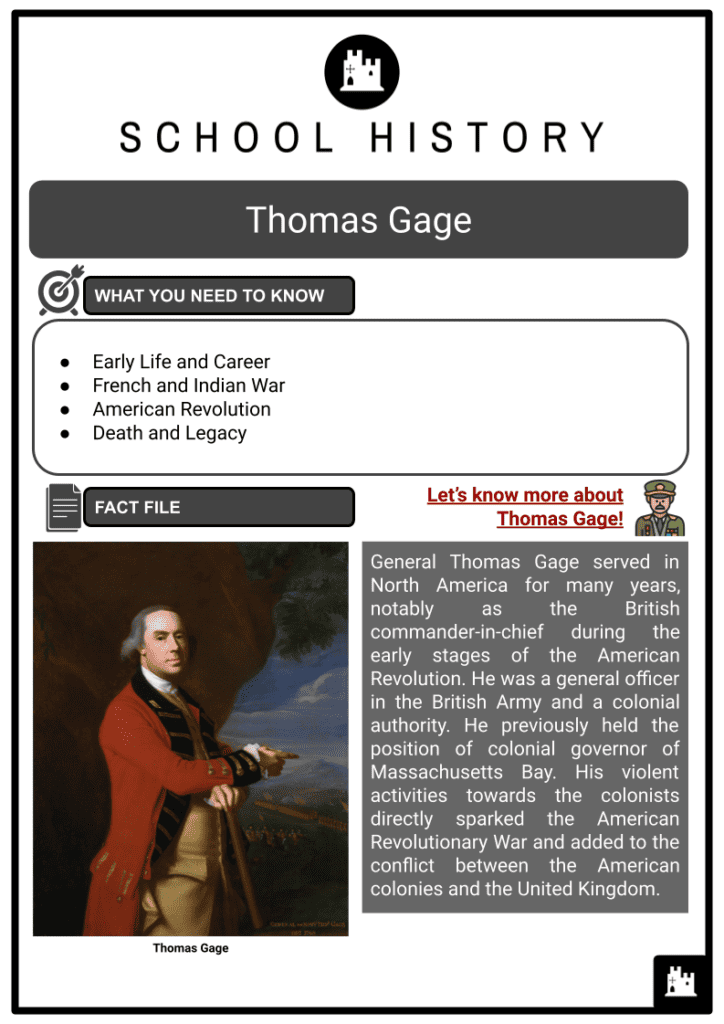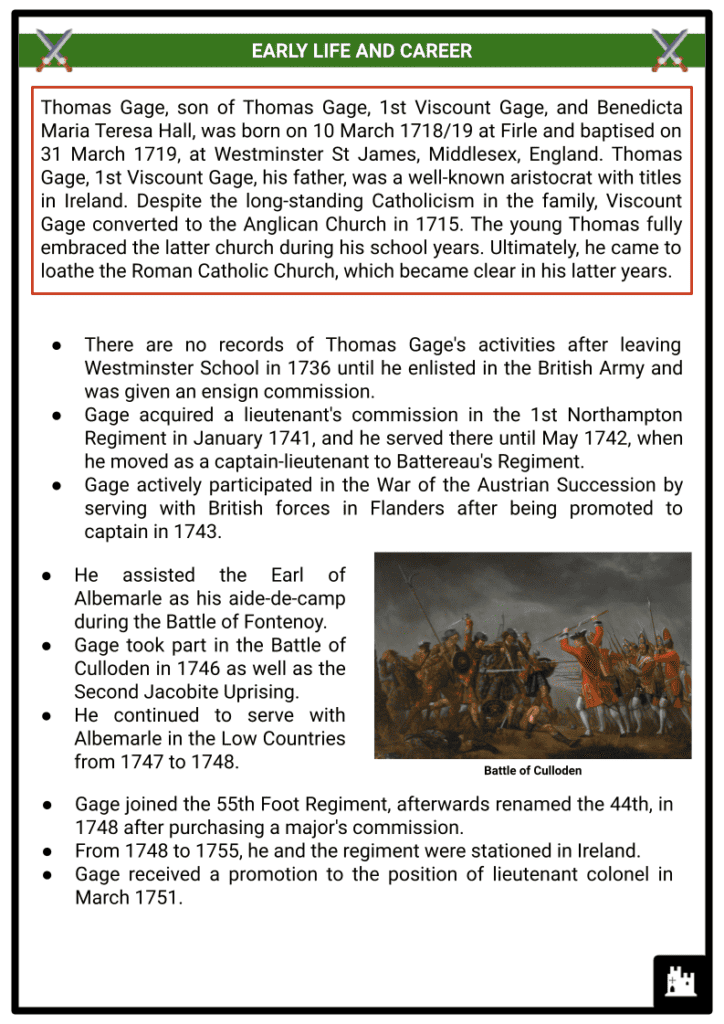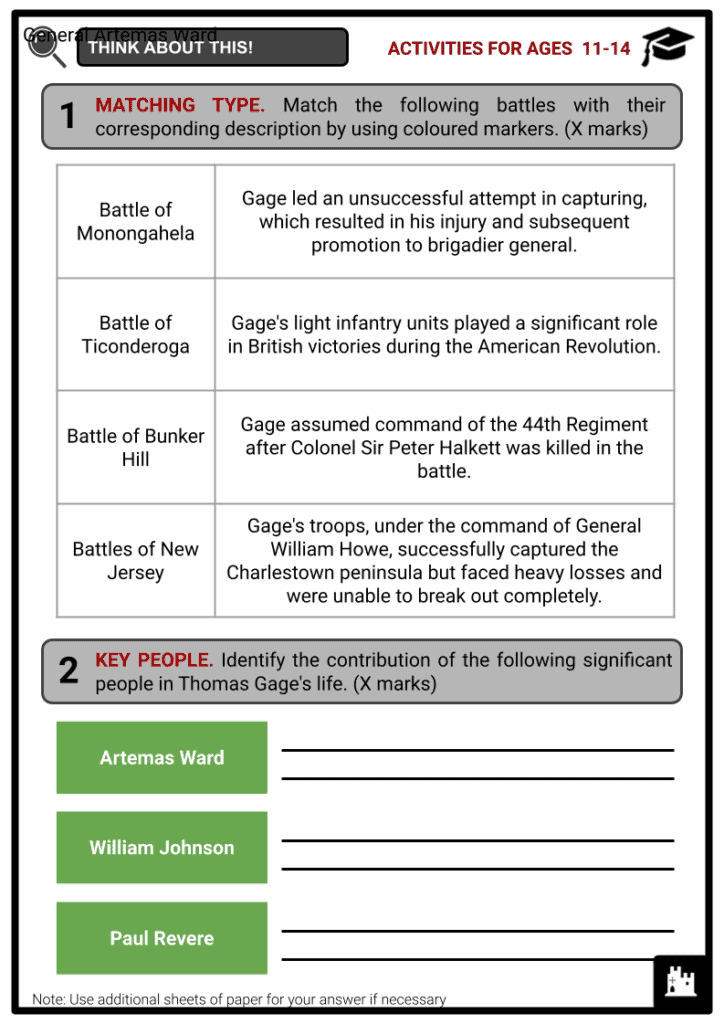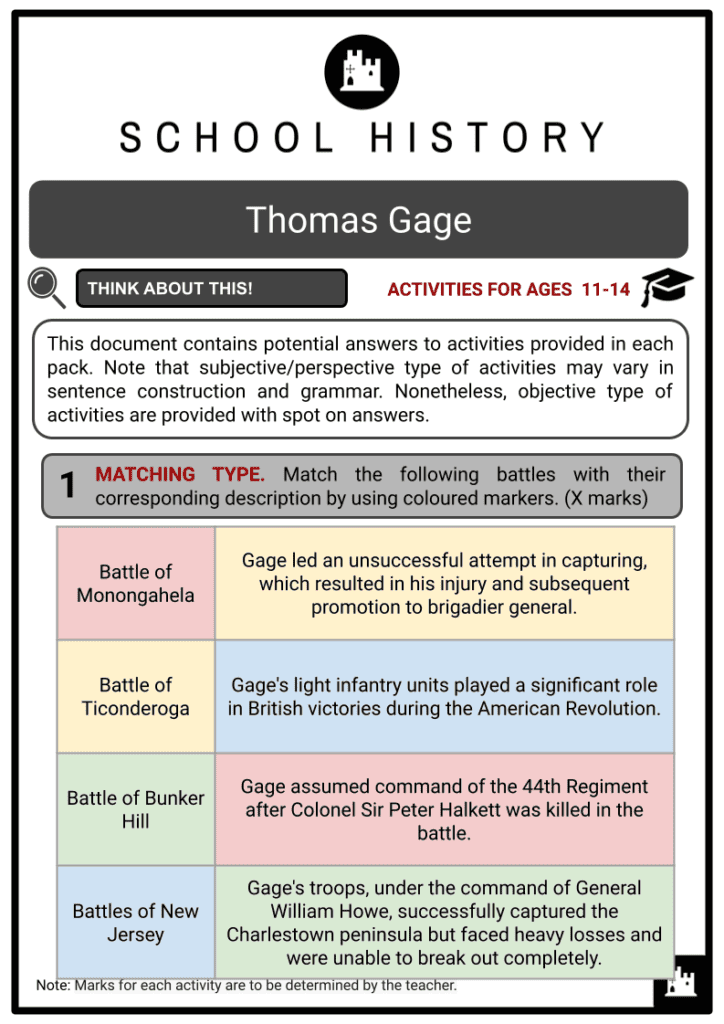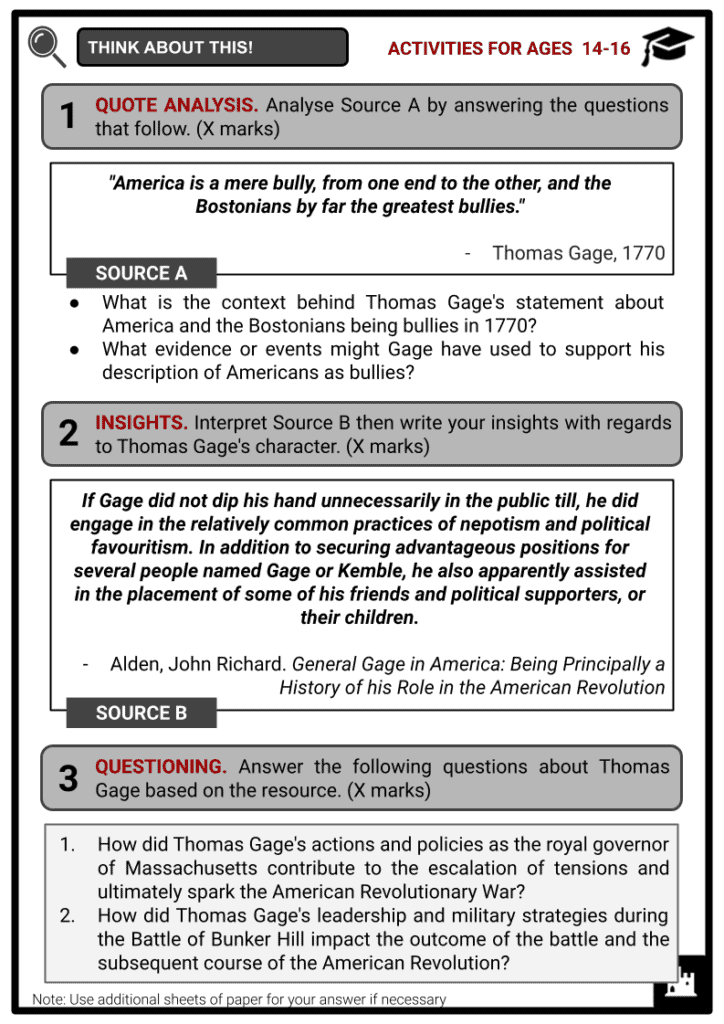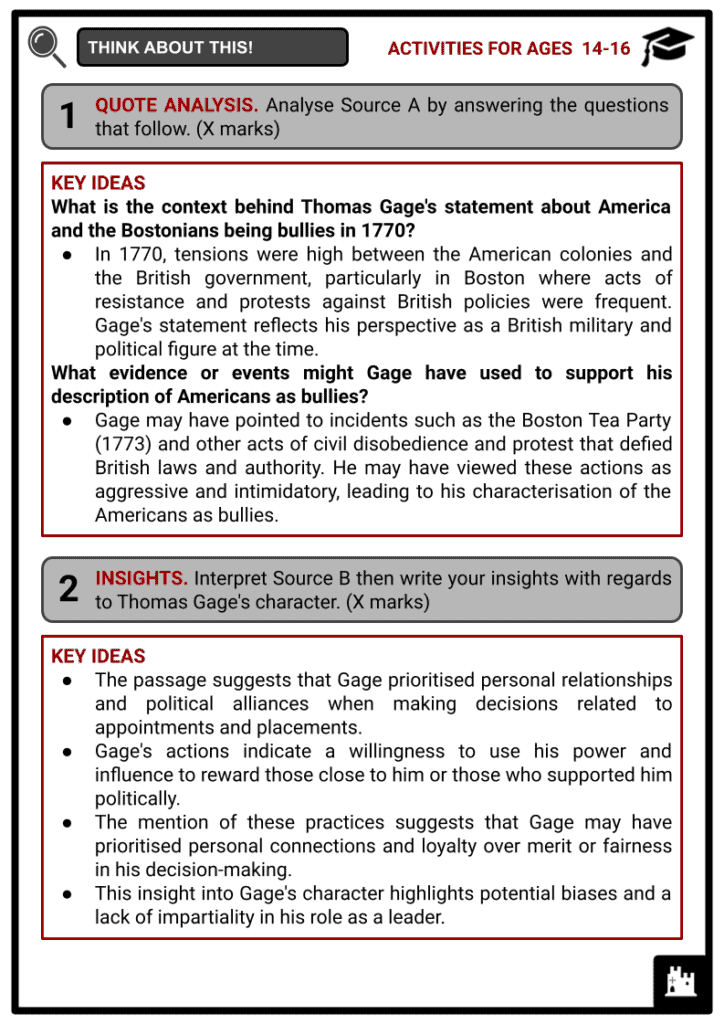Thomas Gage Worksheets
Do you want to save dozens of hours in time? Get your evenings and weekends back? Be able to teach about Thomas Gage to your students?
Our worksheet bundle includes a fact file and printable worksheets and student activities. Perfect for both the classroom and homeschooling!
Summary
- Early Life and Career
- French and Indian War
- American Revolution
- Death and Legacy
Key Facts And Information
Let’s know more about Thomas Gage!
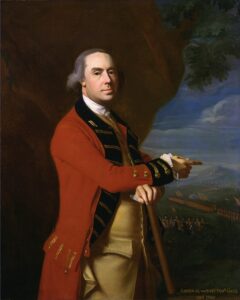
General Thomas Gage served in North America for many years, notably as the British commander-in-chief during the early stages of the American Revolution. He was a general officer in the British Army and a colonial authority. He previously held the position of colonial governor of Massachusetts Bay. His violent activities towards the colonists directly sparked the American Revolutionary War and added to the conflict between the American colonies and the United Kingdom.
EARLY LIFE AND CAREER
- Thomas Gage, son of Thomas Gage, 1st Viscount Gage, and Benedicta Maria Teresa Hall, was born on 10 March 1718/19 at Firle and baptised on 31 March 1719, at Westminster St James, Middlesex, England. Thomas Gage, 1st Viscount Gage, his father, was a well-known aristocrat with titles in Ireland. Despite the long-standing Catholicism in the family, Viscount Gage converted to the Anglican Church in 1715. The young Thomas fully embraced the latter church during his school years. Ultimately, he came to loathe the Roman Catholic Church, which became clear in his latter years.
- There are no records of Thomas Gage's activities after leaving Westminster School in 1736 until he enlisted in the British Army and was given an ensign commission.
- Gage acquired a lieutenant's commission in the 1st Northampton Regiment in January 1741, and he served there until May 1742, when he moved as a captain-lieutenant to Battereau's Regiment.
- Gage actively participated in the War of the Austrian Succession by serving with British forces in Flanders after being promoted to captain in 1743.
- He assisted the Earl of Albemarle as his aide-de-camp during the Battle of Fontenoy.
- Gage took part in the Battle of Culloden in 1746 as well as the Second Jacobite Uprising.
- He continued to serve with Albemarle in the Low Countries from 1747 to 1748.
- Gage joined the 55th Foot Regiment, afterwards renamed the 44th, in 1748 after purchasing a major's commission.
- From 1748 to 1755, he and the regiment were stationed in Ireland.
- Gage received a promotion to the position of lieutenant colonel in March 1751.
- He occasionally travelled, at least as far as Paris, and spent his free time at White's Club, where he was a member during his early years of service. Despite not being a big drinker or gambler, he was well-liked in the army and at the club.
- In 1753, both Gage and his father ran for seats in Parliament. Despite the fact that his father had been in Parliament for a number of years earlier, both candidates fell short in the April 1754 election. They both challenged the results, but Gage withdrew in early 1755 as his unit was being transported to America as the French and Indian War broke out. His father passed away shortly after.
FRENCH AND INDIAN WAR
- Gage travelled to America in 1754 as a member of General Braddock's invading force. George Washington, a future nemesis in the military, participated in the same trip as Gage. Colonel Sir Peter Halkett, the commander of the 44th Regiment, was shot and killed at the Battle of the Monongahela in July 1755. Gage assumed leadership of the regiment while sustaining a minor wound.
- Captain Robert Orme, General Braddock's aide-de-camp at the time, said that Gage's poor field tactics were to blame for the disaster after the regiment was utterly destroyed. The following year, Orme gave up his army career, but his claims caused Gage to lose permanent command of the 44th Regiment.
- Gage served as second-in-command of a disastrous Mohawk River expedition during the year 1756. The next year, he was sent to Captain-General John Campbell Loudoun in Halifax, Nova Scotia, where Gage finally attained full colonel status while commanding the 80th Regiment. During a fruitless attempt to take over Fort Ticonderoga, Gage suffered yet another injury. Gage received a promotion to brigadier general despite this defeat.
- Gage married Margaret Kemble of Brunswick, New Jersey, the daughter of a friend from Westminster School who was then a politician in New Jersey, while recruiting locals for his new regiment. The couple got married in December 1758. The future third Viscount Gage, their first child, was born in 1761.
- Major General Jeffrey Amherst assigned Thomas Gage to head the Albany station.
- Amherst gave Gage the order to march against the French in 1759 in order to take Fort La Présentation and eventually Montreal.
- While Amherst led soldiers towards Montreal, Gage urged using his own forces to bolster Niagara and Oswego in opposition to Amherst's strategy.
- Gage was given command of Fort Albany until Amherst was prepared to assault Montreal in 1760 as a result of his commanding officer's anger at Gage's recommendation.
GOVERNOR GAGE
- Gage was chosen to serve as the military administrator of Montreal after the French capitulated. He was given command of the 22nd Regiment in 1761 after being elevated to the rank of major general. In August 1763, Amherst left for England, and Gage was put in charge of the British forces in North America. Even though the British and French had made peace, a revolt among the Native Americans was already underway on the western frontier when Gage took over leadership.
- The Pontiac's War began in May 1763 with an assault on Fort Detroit by Chief Pontiac's soldiers.
- In an effort to find a diplomatic settlement, Gage sent military expeditions under the command of Colonels John Bradstreet and Henry Bouquet, as well as peace discussions under the direction of Sir William Johnson.
- Colonel Bouquet mediated a limited ceasefire in October 1764, but Gage's soldiers were left with only two forts remaining out of the initial nine taken by the tribes.
- Fort Cavendish was successfully recaptured by Gage and the 42nd Royal Highland Regiment in 1765.
- Western, Southern and Northern regions made up Gage's new division of the frontier command.
- Throughout the summer, Gage sent a negotiator from Johnson's office to speak with Chief Pontiac.
- When Pontiac personally returned to Fort Ontario and formed a formal treaty with Johnson in July 1766, the war with Pontiac was finally put to an end.
- Rising political tension was experienced across the American colonies under Gage's leadership.
- Gage started removing soldiers from the frontier to bolster Boston and New York City. The demand for sufficient housing and food for the troops stationed in cities increased along with the number of soldiers there. The Quartering Act of 1765, passed by Parliament, authorised the quartering of British troops in private homes. Making quartering arrangements for the incoming soldiers in 1768 required Gage to personally come to Boston and stay there for six weeks. The Boston Incident of 1770 was ultimately caused by the military occupation of Boston. Gage received a promotion to lieutenant general in the same year.
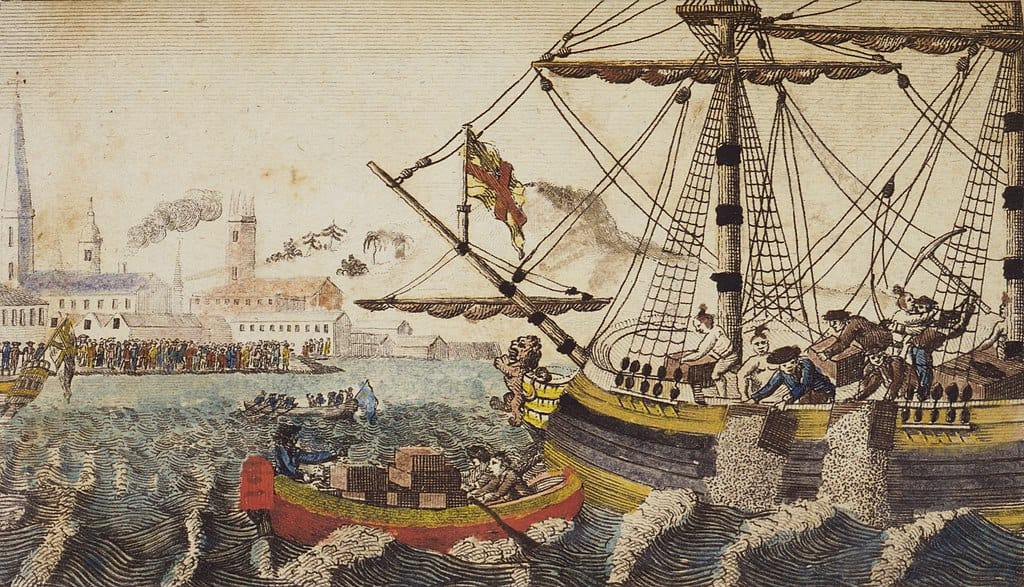
Boston Tea Party - Gage and his family returned to England in June 1773, missing the Boston Tea Party in December of that year. Following the uproar, British forces closed Boston Harbour until the colonists had fully made up for every tea leaf they had lost.
- Thomas Gage was chosen for the position of martial law royal governor of Massachusetts in May 1774 due to his relative rich, military background, and capacity to manage the colony's escalating situation. He took over as governor in place of the civilian one and was in charge of applying the Boston Port Act.
- In September 1774, Gage conducted a successful expedition to collect gunpowder in Somerville, Massachusetts, and he aggressively enforced the confiscation of military materials. The vigilance of Paul Revere and the Sons of Liberty, who constantly watched Gage's activities and effectively notified possible targets before Gage's soldiers could take action against them, caused Gage to have difficulties in later raids.
AMERICAN REVOLUTION
- There were 95 American rebels killed and 273 British losses overall in the Battle of Lexington and Concord. The British expelled the majority of the Minutemen from their towns, but on their way back to Boston, they were attacked by an advancing army of irregulars. After the battle, Gage issued a proclamation promising a general pardon to everyone who would show loyalty to the Crown – with the obvious exceptions of Hancock and Adams – but both Adams and Hancock managed to flee.
- Gage started to worry that his wife Margaret, a native colonist, might have had ties to the insurgents. Gage ordered Margaret to be sent back to Britain because he thought she had broken his confidence in Patriot leader Joseph Warren.
- After the Battle of Lexington, Americans pursued the British back to Boston and took control of the neck of land leading to the peninsula where the city was located, starting the Boston Siege.
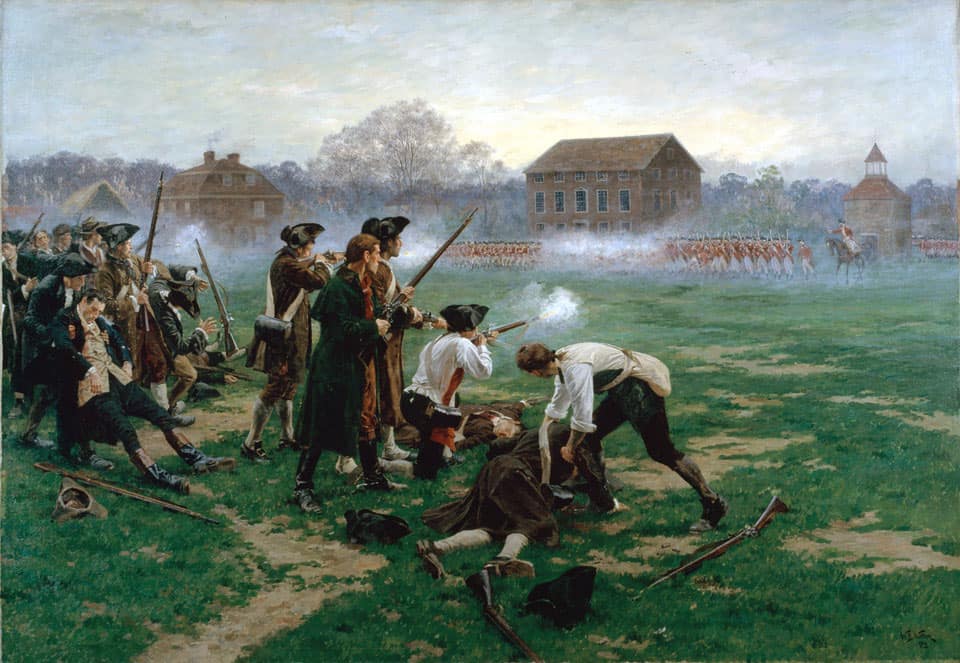
Battle of Lexington - In the beginning, the British regulars under General Gage, who were stationed inside the city, faced the rebels, primarily under the leadership of General Artemas Ward, while British Admiral Samuel Graves oversaw the navy guarding the harbour.
- William Howe, John Burgoyne and Henry Clinton were three additional generals who joined Gage's existing force on 25 May.
- In order to break the besieging forces' hold, Gage and his new generals came up with a strategy that included an amphibious attack to drive the Americans from Dorchester Heights or seize their headquarters in Cambridge.
- General Ward retaliated by giving General Israel Putnam the command to fortify Bunker Hill in order to thwart these British strategies.
- In the Battle of Bunker Hill, which took place on 17 June 1775, British troops led by General Howe took control of the Charlestown peninsula. While they succeeded in their goal, they were unable to completely break out because Americans held the land at the peninsula's base.
DEATH AND LEGACY
- Gage was called back to England on 10 October 1775, and Major General Howe took over as interim commander-in-chief of the British Army in the American colonies. In April 1781, Gage was called back into service when Amherst assigned him to gather men in preparation for a potential French invasion. The 17th light dragoons were under Gage's command the following year. On 20 November 1782, he received his full general promotion and was thereafter given command of the 11th dragoons.
- In the early 1780s, his health started to deteriorate. Gage died at Portland Place on 2 April 1787, and was laid to rest at the Firle family plot.
- Some believe Gage's failure to garrison Dorchester Heights contributed to the loss of Boston, but he learnt quickly.
- By the Battle of Long Island, Gage had established a regiment of light infantry skilled in open-order combat.
- These units, made up of sharpshooters with intelligence, vigour and energy, played a significant role in British victories in New Jersey and Long Island in 1776.
- General Howe brought the concept to the King, and the units became precursors to the Green Jackets and Green Berets.
- Gage's ability to adapt and the success of these specialised units had a lasting and significant impact on military tactics and shaped the future of elite force.
Frequently Asked Questions
- Who was Thomas Gage?
Thomas Gage was a British general who served as the Commander-in-Chief of British forces in North America during the early stages of the American Revolutionary War.
- What role did Thomas Gage play in the American Revolutionary War?
Thomas Gage was responsible for enforcing British rule and suppressing dissent in the American colonies. He is well-known for his orders to seize military supplies and arrest colonial leaders, ultimately leading to hostilities at the Battles of Lexington and Concord in April 1775.
- What happened to Thomas Gage?
Following the British defeat in the American Revolutionary War, Thomas Gage was recalled to England in 1775. He faced criticism for handling the situation in the colonies and was replaced as Commander-in-Chief by General William Howe.

